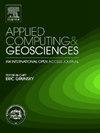含气带含水率剖面地震波速度的神经网络反演
IF 3.2
Q2 COMPUTER SCIENCE, INTERDISCIPLINARY APPLICATIONS
引用次数: 0
摘要
准确估计渗透带含水饱和度对水文和农业应用至关重要。然而,传统的地震反演方法往往存在非线性和噪声敏感性等问题,限制了其泛化能力。为了应对这一挑战,我们提出了一种基于神经网络的反演方法,可以通过纵波速度(vP)和横波速度(vS)来评估含水饱和度的垂直分布。具体来说,我们的架构是基于一个回归模型,并结合了一个自编码器层,以提高对噪声的鲁棒性。因此,这增强了其反演完整饱和度剖面的能力,并提高了其对复杂水文条件的适应性。此外,该模型在不同的地下水位深度上表现出很强的性能,具有较低的误差指标和对输入噪声的高弹性,RMSE为3.34 × 10−2,对于5%的噪声,R2为0.978。我们目前的方法是专门针对有噪声的合成数据进行训练的。我们计划在不久的将来根据我们在农业土壤中记录的试验田数据来验证它。总的来说,这项研究为未来深度学习在水文地球物理反演中的应用奠定了基础,并强调了用现实世界数据验证的必要性。本文章由计算机程序翻译,如有差异,请以英文原文为准。
Neural network inversion of seismic wave velocities for vadose zone water content profile
Accurate estimation of water saturation in the vadose zone is crucial for hydrological and agricultural applications. However, traditional seismic inversion methods often struggle with non-linearity and sensitivity to noise, limiting their generalisation capabilities. To address this challenge, we propose a neural network-based inversion approach that allows the assessment of the vertical distribution of water saturation from compressional () and shear () wave velocities. Specifically, our architecture is based on a regression model and incorporates an autoencoder layer to improve robustness against noise. As a result, this enhances its ability to invert complete saturation profiles and increases its adaptability to complex hydrological conditions. Furthermore, the model demonstrates strong performance across varying water table depths, with low error metrics and high resilience to input noise with a RMSE of 3.34 × 10−2 and a R of 0.978 for 5% noise. Our current approach has been trained exclusively on noisy synthetic data. We plan to validate it in the near future against experimental field data we have recorded for an agricultural soil. Overall, this study establishes a foundation for future applications of deep learning in hydrogeophysical inversion and underscores the need for validation with real-world data.
求助全文
通过发布文献求助,成功后即可免费获取论文全文。
去求助
来源期刊

Applied Computing and Geosciences
Computer Science-General Computer Science
CiteScore
5.50
自引率
0.00%
发文量
23
审稿时长
5 weeks
 求助内容:
求助内容: 应助结果提醒方式:
应助结果提醒方式:


